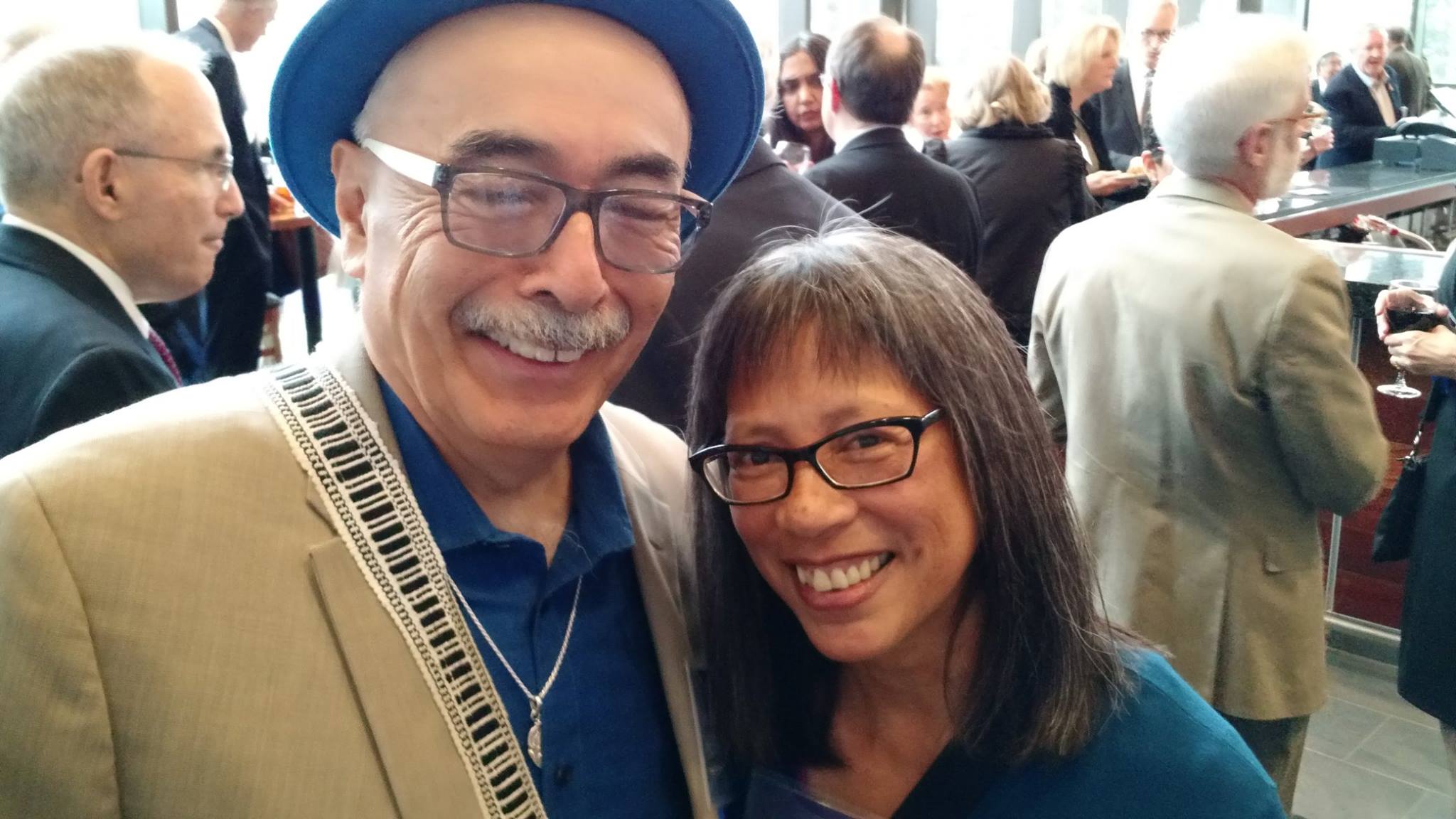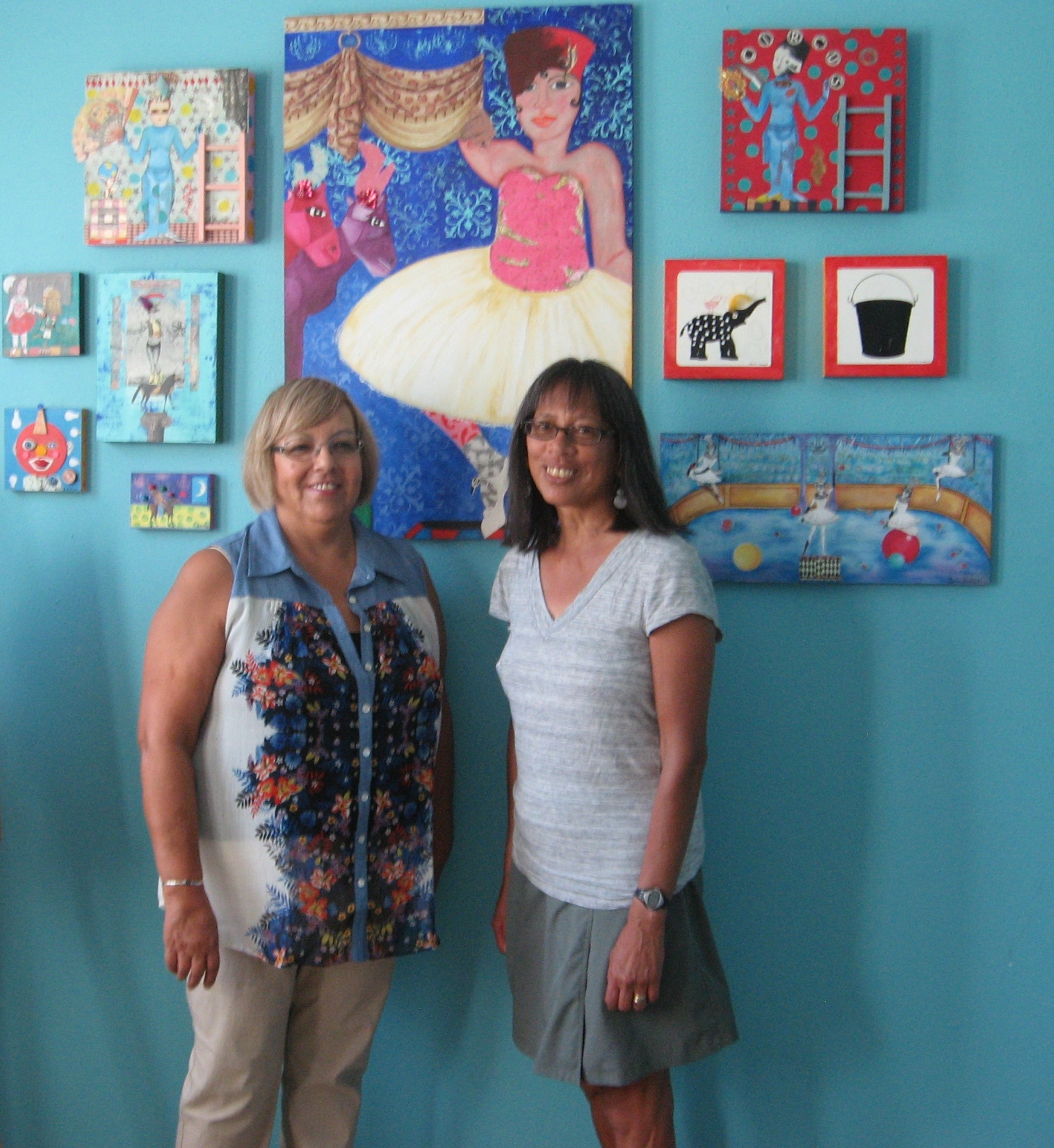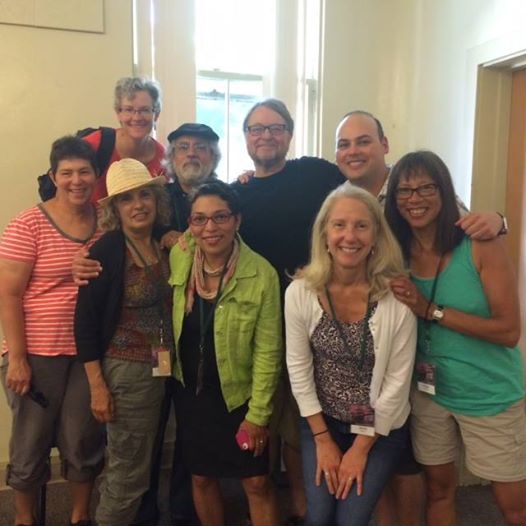Namedropping
When I was growing up in National City, California, I often thought about moving away some day. I knew I would. I just didn’t know where I would go or how I would get there. In 1977, eight months after I graduated from San Diego State, my cousin had just driven in from Texas and was heading back to his home in Oregon. “Come with me,” he said. “I can get you a job.” He might’ve been joking, but I packed a suitcase and got in his car. Within three months I had made my way to Seattle, my home ever since. These days, I try to visit National City once a year to see family. While I’m there, amid all the changes that have occurred – the freeway, the strip malls, the beautiful new library that replaced the little one-story brick building of my childhood – I think about that awkward, timorous, goofy-looking girl I was. Someone too busy being self-conscious about her lack of grace that she never fully engaged with the world around her. I didn’t know that there were people in my vicinity that were developing as artists, activists, and humanists. Only as an adult have I come in contact with a few of them, brushed briefly against their greatness. I drop their names below.
Artist Cecilia Alvarez
Cecilia was born in National City at Paradise Valley Hospital, the hospital where I was a candy striper as a teenager. Cecilia and I are just a few years apart. She grew up on both sides of the border, while I grew up in National City. However, we both attended San Diego  State. That’s where she was told by faculty that “because she was a Mexican-American woman, her work would never be considered fine art.” Cecilia’s response is partially summarized in Wikipedia:
State. That’s where she was told by faculty that “because she was a Mexican-American woman, her work would never be considered fine art.” Cecilia’s response is partially summarized in Wikipedia:
Alvarez’s painting Las Cuatas Diego has been featured in books and exhibitions around the world. Alvarez has also illustrated the bilingual children’s book Antonio’s Card authored by Rigoberto González. Her work is collected by the Mexican Fine Arts Museum, the Seattle Art Museum and by the Kaiser Foundation.
Cecilia moved to Seattle in 1975, two years before I did. We lived no more than six miles apart for decades before we finally met. But I’ve known of her work for a while. It’s gorgeous and powerful and full of energy, depicting themes of feminism, culture and community, and a deep concern for the earth.
Poet Juan Felipe Herrera
The current U.S. Poet Laureate graduated from San Diego High School in 1967, about eight miles from Sweetwater High where I graduated in 1971. He ran the Centro Cultural de la Raza in Balboa Park during the time I was working at the nearby Natural History Museum.
In 1979 he was working on his second book in Suzzallo Library at the University of Washington. I was a graduate student at UW at the time and spent many hours studying in Suzzallo, perhaps even walking past Herrera on occasion.
I had the pleasure of meeting Herrera recently at the University of Washington Friends of  the Library Literary Voices event where he was the keynote speaker. After he spoke and read from his work, including poems about Seattle artists Alfredo Arreguín and Fulgencio Lazo, he took questions from the audience. When asked what inspired him about today’s young Latinos, he said approvingly, “They’re very bold.” I have to believe that their boldness is very much inspired by people like Juan Felipe Herrera, the son of migrant workers, graduate of UCLA, Stanford and the Iowa Writer’s Workshop, author of dozens of books, and lifelong activist for migrant and indigenous rights.
the Library Literary Voices event where he was the keynote speaker. After he spoke and read from his work, including poems about Seattle artists Alfredo Arreguín and Fulgencio Lazo, he took questions from the audience. When asked what inspired him about today’s young Latinos, he said approvingly, “They’re very bold.” I have to believe that their boldness is very much inspired by people like Juan Felipe Herrera, the son of migrant workers, graduate of UCLA, Stanford and the Iowa Writer’s Workshop, author of dozens of books, and lifelong activist for migrant and indigenous rights.
Artist Lupita Shahbazi
Lupita lives in Chula Vista, CA, National City’s neighbor to the south. But she once lived in  National City and attended Sweetwater High five years behind me. I met Lupita several years ago after tracking her down on the Internet. I had discerned her signature on a print my sister had bought at a local art fair and given to me. The print was of a painting titled Dos Niñas and featured two girls sitting side by side on a bench, their ankles tucked demurely behind one another. They’re holding hands, eyes forward, their expressions solemn with fear, perhaps, or sadness, but also a determination to overcome or persevere against any harm that looms. They’re awash in blue light which colors their faces and their bare arms and legs. Their hands clasped around each other signals a strength, a commitment, but also a realization that one day their hands must let go of each other. I kept the print propped on my desk. It’s an image that seemed to embody the stories I had written and gathered into a collection that came to be titled Hola and Goodbye. My publisher has designed a beautiful cover for the book, which I love. But I will always see a connection between Dos Niñas and many of the stories in my collection.
National City and attended Sweetwater High five years behind me. I met Lupita several years ago after tracking her down on the Internet. I had discerned her signature on a print my sister had bought at a local art fair and given to me. The print was of a painting titled Dos Niñas and featured two girls sitting side by side on a bench, their ankles tucked demurely behind one another. They’re holding hands, eyes forward, their expressions solemn with fear, perhaps, or sadness, but also a determination to overcome or persevere against any harm that looms. They’re awash in blue light which colors their faces and their bare arms and legs. Their hands clasped around each other signals a strength, a commitment, but also a realization that one day their hands must let go of each other. I kept the print propped on my desk. It’s an image that seemed to embody the stories I had written and gathered into a collection that came to be titled Hola and Goodbye. My publisher has designed a beautiful cover for the book, which I love. But I will always see a connection between Dos Niñas and many of the stories in my collection.
Writer Luis Urrea
Ten years ago for my birthday my mother gave me The Hummingbird’s Daughter, still one of my favorite books. Two years later in 2008, I met Luis Urrea at the Bread Loaf Writers’ Conference. We compared notes on growing up in and near National City – cruising Highland Avenue, hanging out in Kimball Park, attending catechism class at St, Mary’s. Is it even necessary to say that his trajectory from border life to award-winning, widely loved poet, novelist, short-story writer, essayist, and Latino Literature Hall of Fame member (in short, “literary badass,” according to NPR), is inspiring? How can you not have respect for National City?
A couple of his stories in The Water Museum take place in or near National City. One has the city name in its title, “The National City Reparation Society.” The other is “The Southside Raza Image Federation Corps of Discovery.” Read the whole collection for its range of style, subject, and setting.
Luis was on faculty last summer at the Port Townsend Writers Conference. Being on campus while he was there was a treat. He’s a natural storyteller both on the page and at the podium. His readings are electrifying, and his craft lectures are delivered in an effortless, conversational tone, with an unexpected punch or two. What’s better than listening to Luis Urrea? Doing so with good friends.